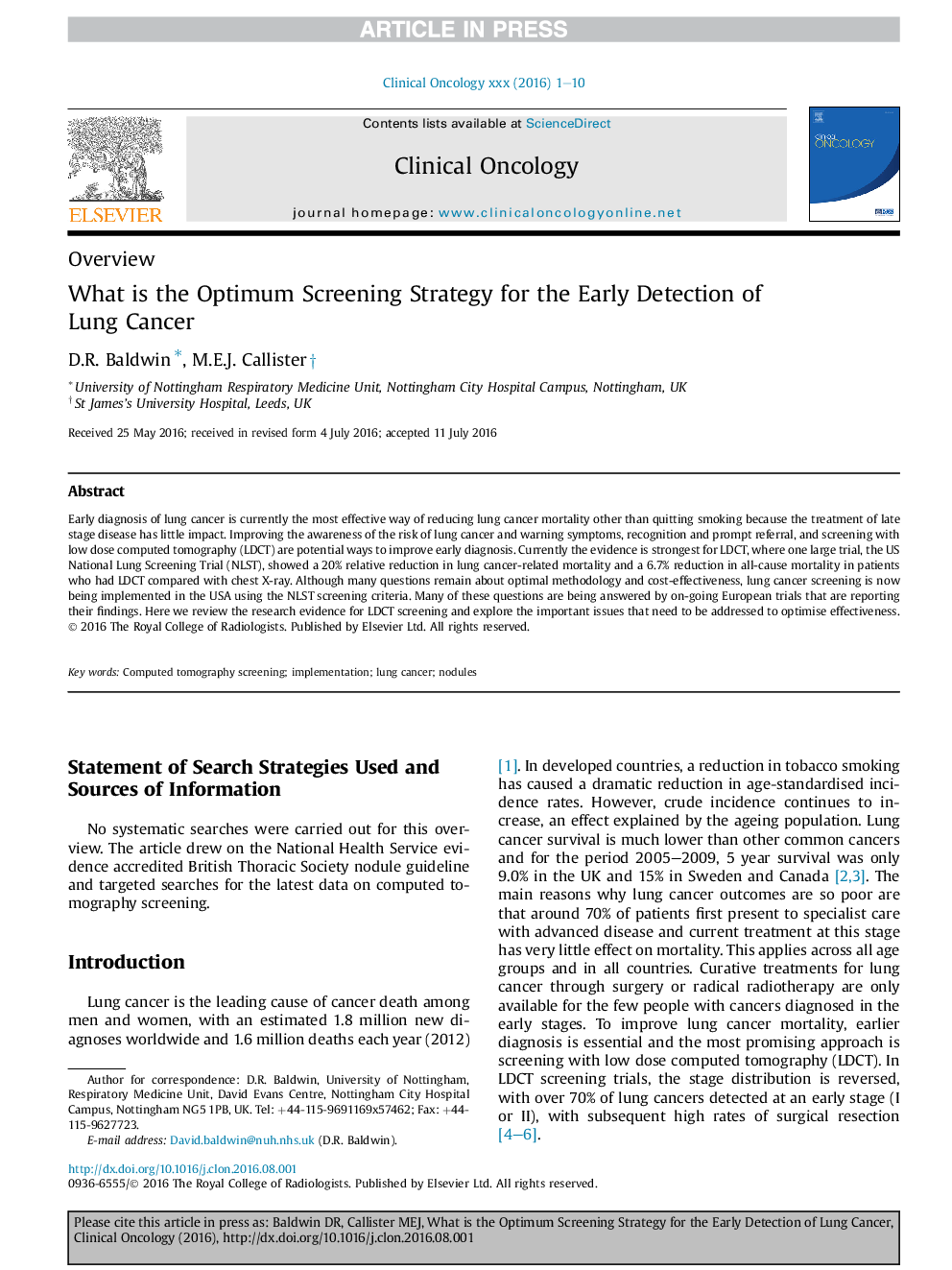| Article ID | Journal | Published Year | Pages | File Type |
|---|---|---|---|---|
| 5698059 | Clinical Oncology | 2016 | 10 Pages |
Abstract
Early diagnosis of lung cancer is currently the most effective way of reducing lung cancer mortality other than quitting smoking because the treatment of late stage disease has little impact. Improving the awareness of the risk of lung cancer and warning symptoms, recognition and prompt referral, and screening with low dose computed tomography (LDCT) are potential ways to improve early diagnosis. Currently the evidence is strongest for LDCT, where one large trial, the US National Lung Screening Trial (NLST), showed a 20% relative reduction in lung cancer-related mortality and a 6.7% reduction in all-cause mortality in patients who had LDCT compared with chest X-ray. Although many questions remain about optimal methodology and cost-effectiveness, lung cancer screening is now being implemented in the USA using the NLST screening criteria. Many of these questions are being answered by on-going European trials that are reporting their findings. Here we review the research evidence for LDCT screening and explore the important issues that need to be addressed to optimise effectiveness.
Keywords
Related Topics
Health Sciences
Medicine and Dentistry
Oncology
Authors
D.R. Baldwin, M.E.J. Callister,
